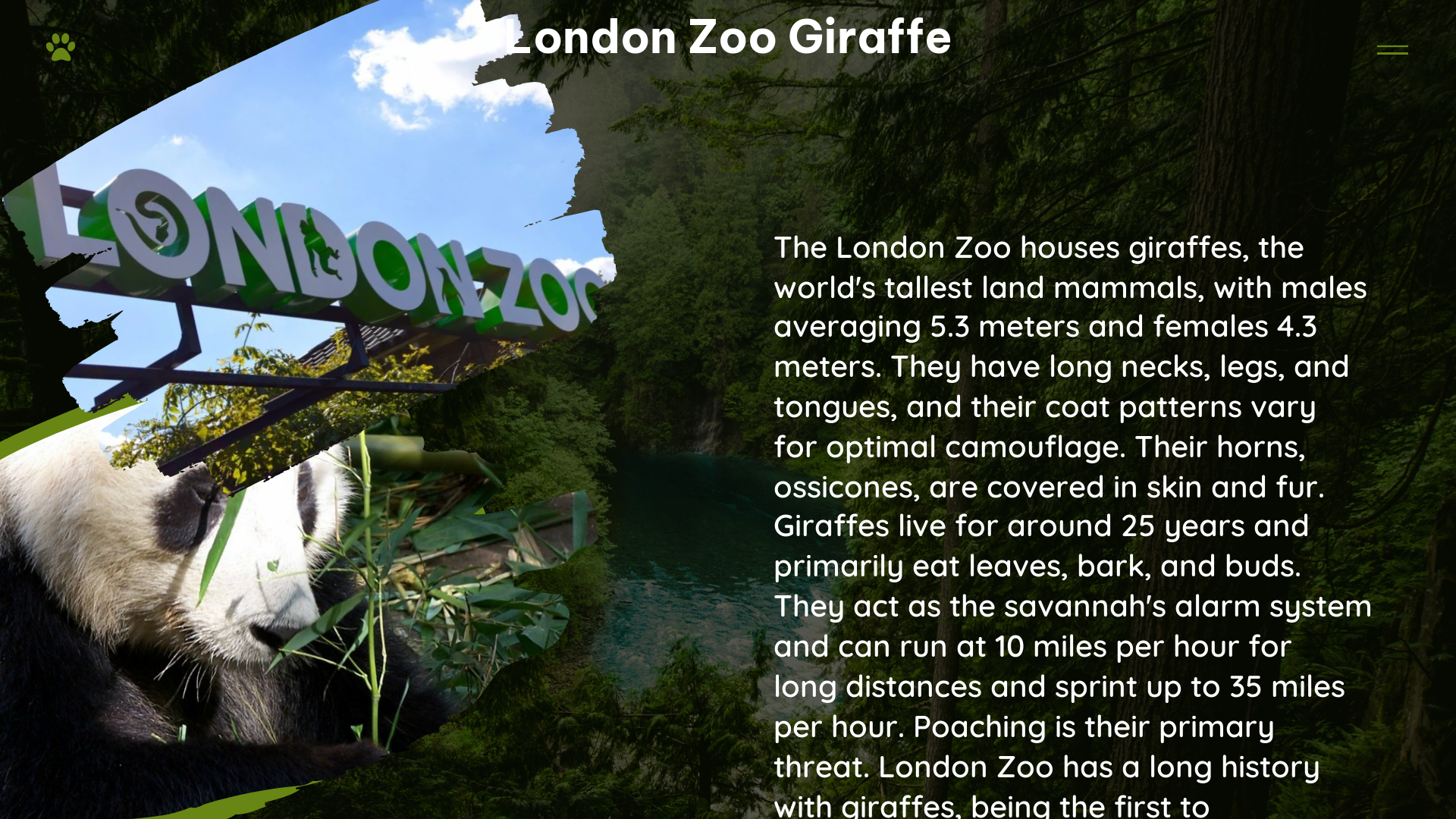London Zoo, located in Regent’s Park, is home to a variety of animals, including the reticulated giraffe. This species, known as giraffa reticulata, is increasingly threatened by habitat loss, hunting, and human/wildlife conflict. Nuru, a seven-year-old reticulated giraffe, is one of the giraffes residing at London Zoo as part of a European breeding programme for the endangered species.
Giraffe Habitat and Characteristics
Giraffes are the world’s tallest land mammals, with long legs, necks, and even tongues that are incredibly dexterous. Their famous brown and yellow coat patterns vary between habitats, always adapted to optimum camouflage with their surroundings. Giraffes have the same number of neck bones as humans, although theirs are linked by ball and socket joints, enabling far greater flexibility.
Giraffes are native to Africa, with their natural habitats ranging from the savannas of East Africa to the woodlands of Southern Africa. They are well-adapted to their environments, with their long necks and legs allowing them to reach the high leaves of trees, their primary food source. Giraffes are also known for their social behavior, often living in herds and communicating through a variety of vocalizations and body language.
Giraffe House History

The Giraffe House at London Zoo was designed by Decimus Burton, the Zoo’s original architect, and is the only Victorian building at London Zoo still used for its original purpose. When giraffes arrived at London Zoo in 1836, they caused a public sensation, and providing these new residents with suitable accommodation was a priority. The Giraffe House was completed for them in June 1837, initially housing four young giraffes that had been transported from Sudan by a French trader.
The Giraffe House has undergone several renovations and expansions over the years to ensure the comfort and well-being of the giraffes. Today, the exhibit features a spacious indoor enclosure with high ceilings, as well as an outdoor area where the giraffes can roam and graze. Visitors can observe the giraffes from various vantage points, including elevated walkways and viewing platforms.
Breeding Success
Between 1839 and 1867, 17 giraffe calves were born to the group at the Zoo, with Queen Victoria recording seeing one of these in her diary on 31 March 1852. Today, Nuru, a seven-year-old reticulated giraffe, is part of the European breeding programme for the endangered species, contributing to the conservation efforts for this amazing Endangered species.
The London Zoo’s giraffe breeding programme has been a remarkable success, with the zoo playing a crucial role in the conservation of the reticulated giraffe. By participating in the European breeding programme, the zoo is helping to maintain a healthy and genetically diverse population of giraffes, ensuring their long-term survival.
Visiting London Zoo Giraffes
Visitors can spot Nuru with her new herd on a trip to the London conservation zoo this spring. For those interested in a unique giraffe experience, London Zoo offers a Giraffe Keeper experience, where participants can step behind-the-scenes for a truly unique giraffe experience. This 90-minute experience allows visitors to get mucked in, helping to clean out one of the giraffes’ dens, prepare some of their food, and, if lucky, feed the giraffes.
Prices for the Giraffe Keeper experience start from £115 for a 90-minute experience, with tickets available until the 30 April including general admissions to the Zoo. Tickets from the 1 May 2024 must have general admission tickets purchased separately.
The London Zoo’s giraffe exhibit is a must-see for any zoo enthusiast. Visitors can observe these majestic creatures up close, learn about their unique characteristics and behaviors, and even have the opportunity to interact with them through the Giraffe Keeper experience. Whether you’re a seasoned zoo-goer or a first-time visitor, the London Zoo’s giraffes are sure to leave a lasting impression.
References:
– https://www.bbc.co.uk/newsround/64808146
– https://www.londonzoo.org/zoo-stories/news/reticulated-giraffe-heads-london-zoo-big-breeding-programme-move
– https://www.londonzoo.org/plan-your-visit/zoo-experiences/giraffe-keeper-experience
– https://www.londonzoo.org/whats-here/animals/giraffe
– https://www.londonzoo.org/zoo-stories/history-of-london-zoo/giraffe-house-history
